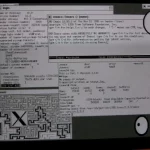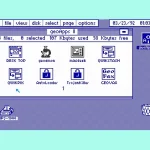Last Updated on: 13th December 2024, 11:50 am
Web site: (not active)
Origin: USA
Category: Desktop
Desktop environment: GUI
Architecture: Power Mac
Based on: Independent
Wikipedia: Copland
Media: Install
The last version | Released: unknown
Copland – a source closed operating system created by Apple in the mid-1990s. It is a prototype of the penultimate “classic” Mac OS. Its development began in early 1995, when the very first mentions of System 8 (later Mac OS 8) appeared.
Initially codenamed “Gershwin”, the operating system was developed by developers who added new features at a rapid pace.
Back in May 1996, the first announcement of Copland stated that this completely new architecture Mac OS would be available to users in mid-1997.
As the deadline for the operating system approached, several key dates were announced by which the operating system was never released. In 1996, new Apple CEO Gil Amelio hired Ellen Hancock from National Semiconductor and assigned her to design the system in an attempt to get the development back on track. Instead, Ellen decided that it would be better to cancel the project and try to find a suitable third-party operating system to replace the Copland project. The development of this system was officially completed and discontinued in August 1996, and after NeXT was purchased by Apple, the NeXTSTEP operating system became the basis for a new version of Mac OS (later Mac OS X).
Copland was designed with a rewritten microkernel called “Nukernel” that would handle the basic tasks (running applications and managing memory) while leaving all other tasks to a series of semi-specialized programs known as servers. For example, networking and file services would not be provided by the kernel itself, but the servers would route various requests through inter-program communications. Copland was a collection of Nukernel, various servers, and a set of helper libraries implementing the (at the time) well-known Macintosh API.
Copland had the following features: a 3D interface, improved search technology, multi-user installation, PowerPC codes, a redesigned file subsystem and other subsystems, “Open Transport”, “OpenDoc” (only development support in Mac OS 8), preemptive multitasking (partially functional in that OS), memory protection, “QuickDraw GX” (this was a feature in Mac OS 8, but its development was later discontinued), a rewritten microkernel, and “spring-loaded” folders (as you drag items onto folders, their pictures automatically expand, making it easier to navigate through folder layers).





